The Spektral Quartet takes advantage of the open-ended playing time of a digital release to create effectively a double album for their latest recording, Experiments in Living. While double albums often suffer from a bit of flab, this one doesn’t have an extraneous moment. It is a well curated release that attends to meaning making in contemporary music with a spirit that is both historically informed and deeply of this moment.
A clever extra-musical addition to the project is a group of Tarot cards that allow the listener to ‘choose their own adventure,’ making their way through the various pieces in different orderings. These are made by the artist/musician øjeRum. The tarot cards may be seen on the album’s site.
It might seem strange to begin an album of 20/21 music with Johannes Brahms’s String Quartet Op. 51, no. 1 in C-minor (1873). However, Arnold Schoenberg’s article “Brahms as Progressive” makes the connection between the two composers clear. It also demonstrates Spektral’s comfort in the standard repertoire. They give an energetic reading of the quartet with clear delineation of its thematic transformations, a Brahms hallmark.
Schoenberg is represented by his Third String Quartet (1927). His first quartet to use 12-tone procedures, it gets less love in the literature than the oft-analyzed combinatorics of the composer’s Fourth String Quartet, but its expressive bite still retains vitality over ninety years later. Ruth Crawford Seeger’s String Quartet (1931), an under-heralded masterpiece of the 20th century, receives one of the best recordings yet on disc, its expressive dissonant counterpoint rendered with biting vividness.
Sam Pluta’s Flow State/Joy State is filled with flurries of glissandos, microtones, and harmonics to create a thoroughly contemporary sound world punctuated by dissonant verticals. One of Pluta’s most memorable gestures employs multiple glissandos to gradually make a chord cohere, only to have subsequent music skitter away. Charmaine Lee’s Spinals incorporates her own voice, replete with lip trills and sprechstimme that are imitated by string pizzicato and, again, glissandos.
Spektral is joined by flutist Claire Chase on Anthony Cheung’s “Real Book of Fake Tunes,” which combines all manner of effects for Chase with jazzy snips of melody and writing for quartet that is somewhat reminiscent of the techniques found in the Schoenberg, but with a less pervasively dissonant palette. Cheung’s writing for instruments is always elegantly wrought, and Chase and Spektral undertake an excellent collaboration. One could imagine an entire album for this quintet being an engaging listen.
The recording’s title track is George Lewis’s String Quartet 1.5; he wrote a prior piece utilizing quartet but considers this his first large-scale work in the genre. Many of the techniques on display in Pluta’s piece play a role here as well. Lewis adds to these skittering gestures, glissandos, and microtones the frequent use of various levels of bow pressure, including extreme bow pressure in which noise is more present than pitch. The latter crunchy sounds provide rhythmic weight and accentuation that offsets the sliding tones. Dovetailing glissandos create a blurring effect in which harmonic fields morph seamlessly. The formal design of the piece is intricate yet well-balanced. More string quartets, labeled 2.5 and 3.5, are further contributions by Lewis to the genre. One hopes that Spektral will take them up as well – their playing of 1.5 is most persuasive.
